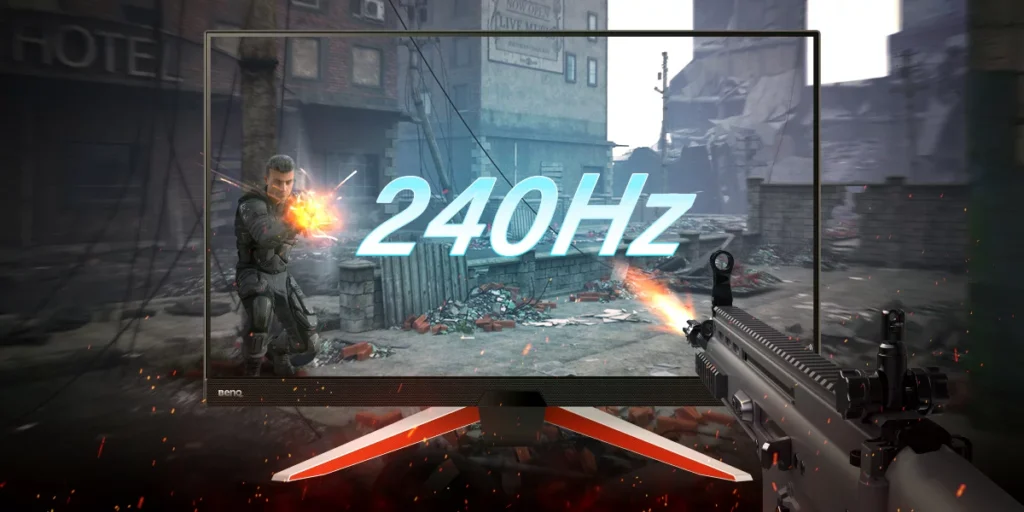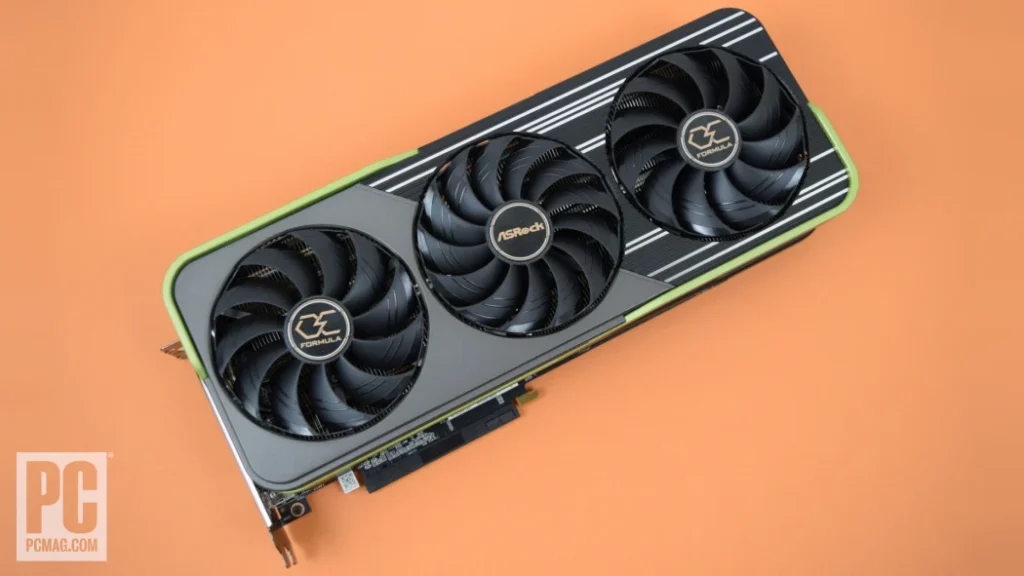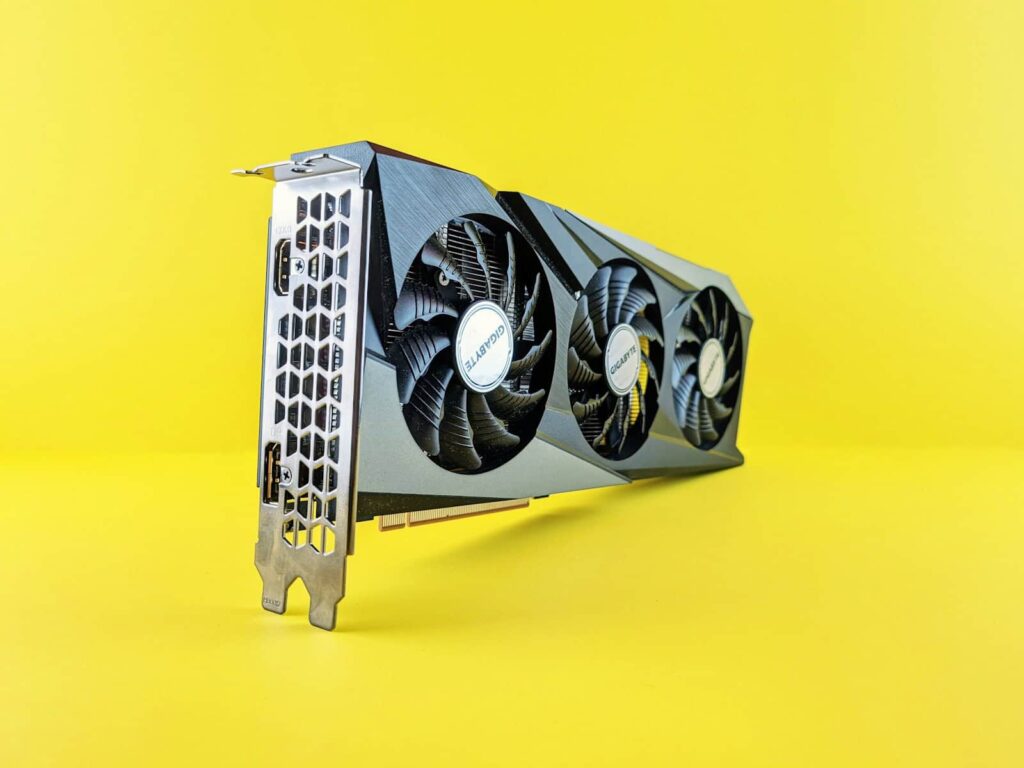Table of Contents
Upgrading to a 240Hz monitor transformed my gaming experience, but I quickly realized my old GPU couldn’t keep up. After switching to a more powerful graphics card, the difference was night and day—ultra-smooth visuals, no stuttering, and a serious competitive edge. If you’re aiming for seamless 240Hz performance, make sure your GPU can handle the load!
A 240Hz monitor gives you super smooth gameplay, but not every GPU can support it. In this guide, we’ll help you find out if your GPU is powerful enough to handle 240Hz for the best gaming experience.
Stay tuned with us as we dive deep into the question, “Can Your GPU Handle 240Hz?” We’ll explore everything you need to know to get the smoothest, most responsive gaming experience possible. Don’t miss out!
What Is a 240Hz Monitor, and How Does It Improve Gaming?

A 240Hz monitor refreshes the screen 240 times per second, making the visuals smoother and more fluid. This higher refresh rate reduces motion blur and improves response time, especially in fast-paced games like first-person shooters or racing games. It allows players to react more quickly because the screen shows new information faster.
For gamers, this can mean a big advantage. The smoother display makes it easier to track moving objects and reduces input lag. While a 60Hz or 120Hz monitor can still perform well, a 240Hz monitor provides a more immersive and competitive gaming experience for those who want the best performance.
Can All GPUs Support a 240Hz Refresh Rate?
Not all GPUs can support a 240Hz refresh rate, especially at higher resolutions like 1440p or 4K. Many older or budget GPUs struggle to maintain the high frame rates needed for 240Hz. They may work at lower settings, but you won’t get the full benefit of the monitor’s high refresh rate.
To fully utilize a 240Hz monitor, you need a powerful GPU that can deliver enough frames per second (FPS). GPUs like NVIDIA’s RTX 3060, 3070, or AMD’s RX 6700 XT are examples of cards that can handle 240Hz, especially in less demanding games or at 1080p resolution.
What GPU Specs Do I Need to Run a 240Hz Monitor Smoothly?
GPU Clock Speed:
To run a 240Hz monitor smoothly, the GPU’s clock speed plays a crucial role. Higher clock speeds allow the GPU to process data faster, ensuring that frames are delivered in time to match the 240Hz refresh rate.
VRAM (Video Memory):
At least 8GB of VRAM is recommended for handling modern games on a 240Hz monitor, especially at higher resolutions. More VRAM allows the GPU to store textures and other data, improving overall performance.
CUDA Cores / Stream Processors:
The number of CUDA cores (NVIDIA) or stream processors (AMD) directly affects how well a GPU can handle demanding tasks like rendering frames at high refresh rates. More cores generally mean better performance.
Cooling System:
A robust cooling system is essential when running a GPU at high frame rates for extended periods. Good cooling prevents overheating and maintains stable performance, ensuring the GPU can consistently handle 240Hz output.
Power Supply Requirements:
Running a 240Hz monitor with a powerful GPU requires a power supply that can handle the extra load. Ensure your PSU has enough wattage and is compatible with the GPU you choose to avoid performance issues.
Read More: What Is A Good GPU Percentage – Complete Guide 2024!
Which GPUs Are Best for 240Hz Gaming?
- NVIDIA GeForce RTX 4080: Delivers exceptional performance at 240Hz for 1440p and 4K gaming.
- NVIDIA GeForce RTX 4070 Ti: A great option for high frame rates in 1080p and 1440p gaming.
- NVIDIA GeForce RTX 3080: Offers powerful performance, ideal for 240Hz at 1440p resolution.
- AMD Radeon RX 7900 XT: A top-tier card for smooth 240Hz gameplay at both 1080p and 1440p.
- AMD Radeon RX 6800 XT: Excellent for high refresh rate gaming at 1080p and 1440p resolutions.
- NVIDIA GeForce RTX 3060 Ti: A solid mid-range GPU that can support 240Hz in less demanding games.
- AMD Radeon RX 6700 XT: Another mid-range option, capable of 240Hz gaming at 1080p resolution.
Do I Need a High-End GPU for 240Hz, or Can Mid-Range GPUs Work?

You don’t always need a high-end GPU for 240Hz gaming, but it depends on the games you play and the resolution. Mid-range GPUs, like the NVIDIA RTX 3060 Ti or AMD RX 6700 XT, can handle 240Hz at 1080p in less demanding games or when graphics settings are lowered. These cards offer good performance without being too expensive.
However, for more demanding games or higher resolutions like 1440p, a high-end GPU is often needed. Cards like the RTX 4070 or RX 7900 XT are better suited for consistently reaching 240Hz with high settings. Mid-range GPUs may struggle to maintain smooth frame rates in these cases.
How Many FPS Do You Need for 240Hz Monitors?
240 FPS for Optimal Performance:
To fully benefit from a 240Hz monitor, your system should aim to produce 240 frames per second (FPS). This ensures that every refresh of the monitor shows a new frame, providing the smoothest possible experience.
Can You Use a 240Hz Monitor Below 240 FPS:
Yes, you can use a 240Hz monitor even if your system produces fewer than 240 FPS. However, the experience won’t be as smooth, and you won’t take full advantage of the monitor’s refresh rate.
Is 120 FPS Good Enough for 240Hz:
While 120 FPS on a 240Hz monitor will still be smoother than a 60Hz display, you won’t fully utilize the 240Hz capability. Higher FPS delivers a more fluid and responsive experience.
Does Frame Rate Affect Competitive Gaming:
Yes, in competitive gaming, higher frame rates, closer to 240 FPS, give players an advantage by reducing input lag and improving response times, making a 240Hz monitor more effective.
Can Your GPU Consistently Hit 240 FPS:
A GPU capable of maintaining 240 FPS or more is required for top performance. This is especially important in fast-paced games like first-person shooters, where every frame counts.
Is a 240Hz Monitor Worth It If You Can’t Reach 240 FPS:
Even if your system can’t consistently reach 240 FPS, a 240Hz monitor can still improve smoothness and responsiveness, but you’ll get the best experience when paired with a high FPS output.
Does Running 240Hz Affect GPU Performance and Temperatures?
Running a 240Hz monitor can affect GPU performance and temperatures. When the monitor refreshes rapidly, the GPU must work harder to produce enough frames per second. This increased workload can lead to higher temperatures, especially during intense gaming sessions. It is important to have good cooling solutions to keep the GPU from overheating.
In some cases, a higher refresh rate can also reveal bottlenecks in your system. If your GPU is struggling to keep up, you may notice lower frame rates or stuttering. To maintain smooth performance at 240Hz, ensure your GPU is powerful enough and that your cooling system is efficient. This way, you can enjoy the benefits of a high refresh rate without overheating issues.
Read More: Is Call Of Duty CPU Or GPU Intensive – Discover Which One Matters Most!
Can a 240Hz Monitor Work with Older GPUs?
Yes, a 240Hz monitor can work with older GPUs, but the experience may not be ideal. Older GPUs might struggle to produce enough frames per second (FPS) to match the monitor’s refresh rate. This can result in lower performance, stuttering, or screen tearing. You may also need to lower the graphics settings in games to achieve smoother gameplay.
While you can connect an older GPU to a 240Hz monitor, it is important to understand its limits. Many older GPUs are designed for lower refresh rates, such as 60Hz or 120Hz. If you mainly play less demanding games, you might still enjoy a better experience than a standard monitor. However, for fast-paced gaming, upgrading to a more powerful GPU would help you fully enjoy the benefits of a 240Hz display.
How Do I Optimize My GPU Settings for 240Hz Performance?

Adjust In-Game Graphics Settings:
Lowering the graphics settings in games can help your GPU maintain a higher FPS. Reducing options like shadows, textures, and anti-aliasing can significantly improve performance and allow you to reach closer to the 240 FPS target.
Enable Vertical Sync (V-Sync) or G-Sync/Freesync:
Using V-Sync can help eliminate screen tearing by syncing your frame rate to the monitor’s refresh rate. Alternatively, enabling G-Sync (NVIDIA) or FreeSync (AMD) provides smoother gameplay without limiting FPS, as these technologies adjust the monitor’s refresh rate to match your GPU’s output.
Update Your GPU Drivers:
Keeping your GPU drivers up to date is crucial for optimal performance. New drivers often include performance improvements and bug fixes that can enhance your gaming experience, especially with high refresh rate monitors.
Use Performance Mode in GPU Control Panel:
Most GPU control panels, like NVIDIA Control Panel or AMD Radeon Software, have a performance mode option. Setting your GPU to prioritize performance can help it deliver higher frame rates while gaming, making it better suited for 240Hz displays.
Monitor Temperature and Overclock if Necessary:
Keep an eye on your GPU’s temperature while gaming. If it’s running cool, you might consider overclocking the GPU to increase its performance. Just be cautious with overclocking, as it can lead to overheating if not done properly. Always monitor temperatures and stability after making changes.
Will Future GPUs Make 240Hz More Accessible for Gamers?
Yes, future GPUs are likely to make 240Hz gaming more accessible for a wider range of gamers. As technology advances, new GPUs will offer better performance at lower prices. This means more gamers will be able to afford powerful graphics cards that can easily handle high refresh rates. Additionally, improvements in manufacturing processes can lead to more efficient and cooler-running GPUs.
Moreover, game developers are also optimizing their titles to run better on modern hardware. This means that even less demanding games can achieve higher FPS on future GPUs. With this trend, more players will enjoy smooth and responsive gameplay on 240Hz monitors without needing to invest heavily in high-end components.
Frequently Asked Questions:
1. What Types of Games Benefit Most from a 240Hz Monitor?
Fast-paced games like first-person shooters, racing games, and competitive multiplayer titles benefit the most from a 240Hz monitor. The high refresh rate allows for smoother motion, making it easier to track fast-moving objects and react quickly.
2. Is It Worth Upgrading to a 240Hz Monitor?
If you play competitive games or value smooth visuals, upgrading to a 240Hz monitor can be worth it. The improved frame rates and responsiveness can enhance your gaming experience significantly, especially if your hardware can support it.
3. What is the Difference Between 240Hz and 144Hz?
The main difference is the refresh rate. A 240Hz monitor refreshes the image 240 times per second, while a 144Hz monitor does so 144 times. This means that a 240Hz monitor can provide smoother motion and better responsiveness, especially in fast-paced games.
4. Can I Use a 240Hz Monitor for Everyday Tasks?
Yes, a 240Hz monitor can be used for everyday tasks like browsing and office work. While the benefits are most noticeable in gaming, the smoother visuals can make general computer use feel more fluid.
5. What Resolution is Best for 240Hz Gaming?
1080p is often the best resolution for 240Hz gaming, as it allows most GPUs to reach higher frame rates easily. However, 1440p can also work well if you have a powerful GPU that can handle the increased demands.
6. Do All 240Hz Monitors Have the Same Input Lag?
No, not all 240Hz monitors have the same input lag. Some models are designed with lower input lag, which is crucial for competitive gaming. When choosing a monitor, look for reviews and specifications that mention input lag.
7. Can a 240Hz Monitor Help with Console Gaming?
Yes, a 240Hz monitor can enhance console gaming, especially with next-gen consoles like the PlayStation 5 and Xbox Series X. These consoles can output high frame rates, making a 240Hz monitor beneficial for smoother gameplay.
8. How Can I Tell If My GPU Can Handle 240Hz?
You can check your GPU’s performance by running benchmarks in games you play. If your GPU consistently delivers frame rates close to or above 240 FPS at your desired settings and resolution, it can handle a 240Hz monitor.
9. What Cables Do I Need for a 240Hz Monitor?
To achieve 240Hz, you typically need a DisplayPort cable or a high-speed HDMI cable that supports the necessary bandwidth. Make sure your GPU and monitor both have compatible ports.
10. Are 240Hz Monitors Expensive?
240Hz monitors can be more expensive than standard 60Hz or 144Hz models, but prices have been decreasing. There are budget options available, so you can find a monitor that fits your needs without breaking the bank.
Conclusion:
In conclusion, a 240Hz monitor can greatly enhance your gaming experience by providing smoother visuals and faster response times. To fully enjoy these benefits, it’s important to have a powerful GPU that can consistently deliver high frame rates. While high-end GPUs are ideal, some mid-range options can also work well, especially at lower resolutions. With the right setup, you can take full advantage of the incredible performance that 240Hz monitors offer.

I really appreciate your help
How can I find out more about it?
Thank you for writing this post!
I enjoyed reading your piece and it provided me with a lot of value.
Thank you for writing this post!